Helping you and your dog to achieve balance and a healthy state of mind.
Never mind teaching old dogs new tricks; get ’em while they’re young and you won’t have to worry in later life. Puppy training should begin as early as 6-12 weeks. Effective learning can often occur even sooner, when they learn to socialize with other dogs before going to their respective new homes. We can’t teach you everything in this small article, but as with any teaching, there are right ways and wrong ways. Too much force, for example, can delay or destroy the bond you’re attempting to build.
Too little force will only teach the pup who’s really in charge. Don’t repeat your command multiple times; your puppy will only learn that he doesn’t have to obey the first time. Most successful training is based on rewarding completed tasks. Food, petting, toys and simple attention are all positive incentives.
Each reward should be accompanied by a “good dog” and a meaningful hand signal; this verbal/visual combination will increase the likelihood of a correct response. The best time to train is close to dinnertime. At the beginning, rewards may be handed out immediately following a successful response, with frequency decreased until the command is learned. And now, here are some brief but proven tips to teach specific commands or behavior.
SIT: With the puppy standing, hold a piece of dry food at face level and say his name. Lift the food higher until the puppy sits naturally. When this happens, say “sit” so that the command becomes associated with the action of your hand motion and his physical reaction. Give him the food as a reward. Eventually he’ll perform with only the words and hand motions.
STAY: With the puppy sitting, hold out your palm and firmly say “stay.” Quickly give him a reward, then take a step back and repeat the process. In the course of this training, gradually increase the time he’s required to stay and the distance between the two of you before the next command.
COME: Once again, the trick to this trick is a verbal/visual cue combo. Hold out a bit of food and say puppy’s name. When he begins to move in your direction, add the word “come.” When he completes the task, give him the food, move back and do it again. This takes extreme patience, but when you can master the art of getting your dog to come when called, you will be forever grateful.
HOUSEBREAKING: Punish the puppy only when you catch him red-handed. Likewise, reward correct behavior. Start inside with papers and pretreated pads. Gradually move them closer to and then out the door. Use a verbal command (“outside”) firmly and consistently to initiate the activity, rather than waiting until you notice that the pup has to go. Be patient … be positive … and be consistent. Your pet is, after all, a creature of habit.



